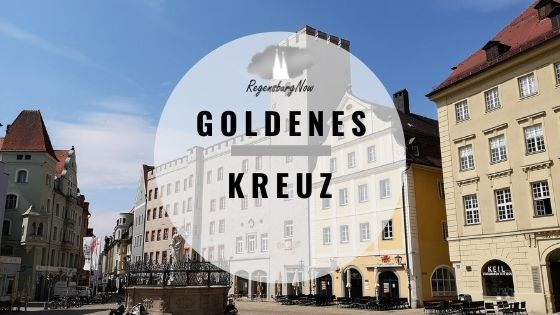
The Golden Cross
THE GOLDEN CROSS.
You almost feel like you’re in Italy when you stroll across the picturesque Haidplatz with its old facades and the Justitia fountain. In summer, a cool Prosecco and a pasta – a little vacation for in between. In the run-up to Christmas, the Lucrezia Market usually attracts visitors with its colorful stalls and an even more colorful range of alternative products. The windows of the historic buildings are illuminated with lights to create that special magic that gives the square its special flair even in December. When you look up at the battlements of the “Goldenes Kreuz” hotel, intoxicated by the scent of mulled wine and other delicacies, very few people know what has happened in this venerable hotel. The former patrician castle with its imposing tower, which was used as an inn as early as the 16th century, was the scene of historic events. The tower of the house to the east and the adjoining four-storey residential building to the west were built as early as the Middle Ages, around 1250. The Weltenburgs are named as the oldest owners of the ensemble. Many important Regensburg families followed.
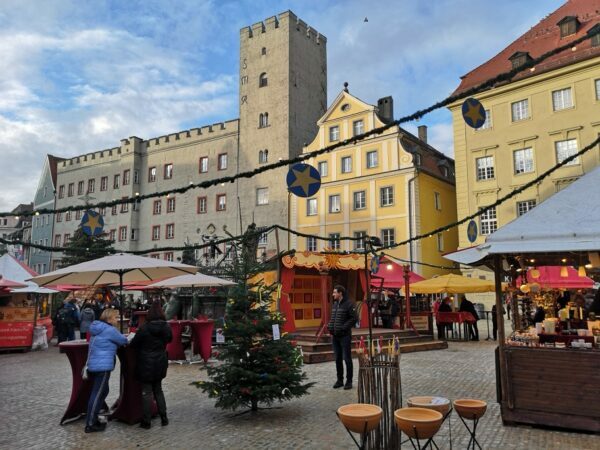
The house soon became a comfortable and probably the most famous hostel in the German lands. Emperors and kings, princes and diplomats stayed here. In 1530, Emperor Ferdinand I stayed here on his coronation trip to Aachen, and Emperor Charles V even stayed here three times during the imperial assemblies in the years 1532 – 1541. If you look closely, you will see a portrait with an inscription in the old language above the row of windows on the second floor, which reveals even more:
“In this old-style house / after a long journey Mr. KAYSER CARL DER FÜNFFT has often rested / well known all over the world / who has also kissed a young woman’s mouth here for a good hour.
She was known far and near as the beautiful BARBARA / Her lineage was simple / plain and true PLUMBERGER was the name of the family / who brought much suffering to the king’s love / but comfort and salvation to Christianity.
Then out of this grew / Like his father the DON JUAN OF AUSTRIA / Who at LEPANTO in battle / Destroyed the Turks’ power. the LORD forgave him all his days / Now as well as in eternity.”
(The text was written by local historian Carl Woldemar Neumann.) Of course, we are talking about Charles V, the Emperor of the Holy Roman Empire in the 16th century, who met his “old lady love” here during his last stay. Who doesn’t know the love story with the beautiful Regensburg woman Barbara Blomberg, the daughter of the Regensburg belt maker from the house on the corner of Kramgasse and Tändlergasse. Of course, whether the later hero of Lepanto, Don Juan de Austria, whose statue we can admire today on Zieroldsplatz, was really conceived here is a moot point. However, it is documented that the emperor, in whose empire, according to contemporaries, the sun never set (it stretched across several continents, with a power base in Spain), had several historical encounters of a less amorous nature here: In the vault, which dates back to the 15th century, the emperor washed the feet of twelve old men at Easter 1541.
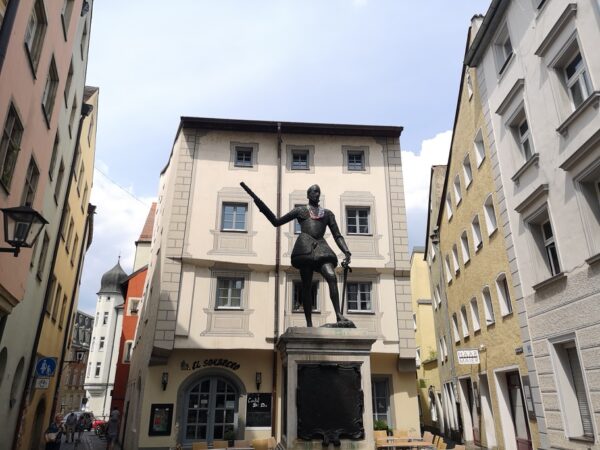
After the occupation of Regensburg by the Swedes in the Thirty Years’ War in November 1633, their commander-in-chief took up quarters here after the occupation of the city, as did King Ludwig I of Bavaria later, for example in 1842 for the opening ceremony of the Walhalla. In 1865, the stately building served as the venue for the ministerial conference of the time. At that time, King Wilhelm I of Prussia, Otto von Bismarck (to whom the popular Regensburg square above the Stadt-Theater owes its name), Johann von Sachsen and his wife Amalie Auguste von Bayern, among others, all met here. Our fairytale king, Ludwig II, also stayed at the house and later his uncle, Prince Regent Luitpold of Bavaria, and also Emperor Wilhelm I. However, the story that Sisi, Empress Elisabeth of Austria, also visited her sister Helene, the “Nene” formerly spurned by Franzl, who was meanwhile married to the hereditary prince Maximilian Anton von Thurn und Taxis in Regensburg, is not documented: Sisi, who was known to be extravagant, is said to have sunbathed on the roof terrace of the tower, covered by bed sheets stretched around the terrace. But that’s another story… In any case, around 1850, the chef Marie Schandri ensured the flourishing of the house and to the great delight of several generations with her outstanding culinary skills. In her “Regensburg Cookbook” – a bestseller that is still available today in a new edition – she reveals what she served to prominent Regensburg guests over four decades. She never skimped on exquisite ingredients and large portions. Whether this would be enough to make her a star chef today remains to be seen. In any case, the recipes contain a piece of Regensburg history and belong in every good household. But even the best kitchen aromas didn’t help, as progress at the end of the 19th century also brought about urban development changes in the medieval cathedral city. As a continuation of the modern railroad station, the prestigious Maximilianstrasse was built, a truly magnificent mile for those times. Crowned in 1888 by a new luxury hotel – the Hotel Maximilian. The heyday of the former imperial hostel on Haidplatz was finally over and the Goldenes Kreuz closed its doors in 1898. In 1968, a café opened on the first floor of the historic building, which is popular with Regensburg residents and tourists alike. Today, the Kaisersaal is once again used for festive receptions and concerts. In 2005, a small, fine hotel was reopened in the building, keeping the almost 500-year history of the imperial hostel alive. Today, anyone can make a princely bed here and give birth to heroes. What Bismarck’s wife wrote enthusiastically about Regensburg and why a Munich cavalier raved about the nights in the Golden Cross, piquant and interesting details about the emperor’s liaison and his chosen one. The owners of the house over the centuries, Regensburg’s first female celebrity chef and much more interesting information can be found in Rainer Krämer’s “Regensburg History” – one of around 30 of his books on Regensburg’s history and stories.
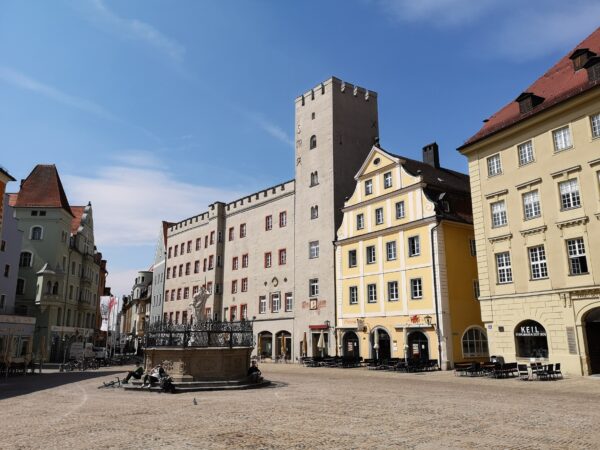
Interesting side note:
During renovation work in 2013, a black wooden board for 30 room keys was found on the door to the former house chapel, which was apparently converted into a reception desk after the Reformation. A relic of the hostel’s former operation. The second floor of the residential wing is still home to the so-called “Kaisersaal”. The baroque stucco ceiling with the imperial eagle in the central field, framed by the four elements, dates from 1650. The so-called “Kreuzsaal” is also located on the second floor in the rear building. Here, on the “swinging dance floor” specially installed by the owners Peters in 1865, the legendary “Kreuzbälle” – one of the most important social events in Regensburg at the turn of the century – took place in the later 19th century. This is why there are wonderful Art Nouveau paintings here.
Many thanks to our author Marion Lanzl for this article!
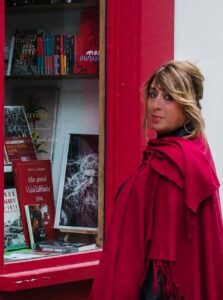


(unpaid advertising due to naming and shaming)
Our excursion tips on Facebook:
Do you already know our Facebook group “Excursion tips in and around Regensburg plus Upper Palatinate” with more than 22,000 members? Click here for the group.
RegensburgNow.de has over 40,000 readers per month and is a site of the RegensburgNow agency
If you are interested in advertising on RegensburgNow, please write to us at mail@regensburgnow.de
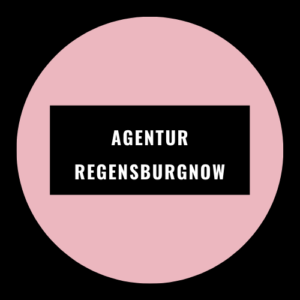
Don’t miss a thing! Subscribe to our newsletter:
Want more tips? Then please click here:















